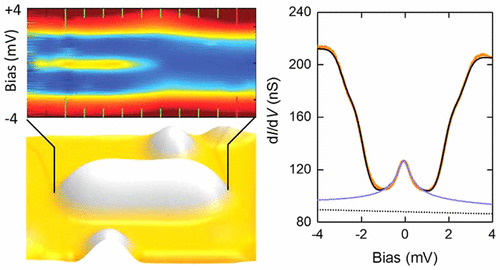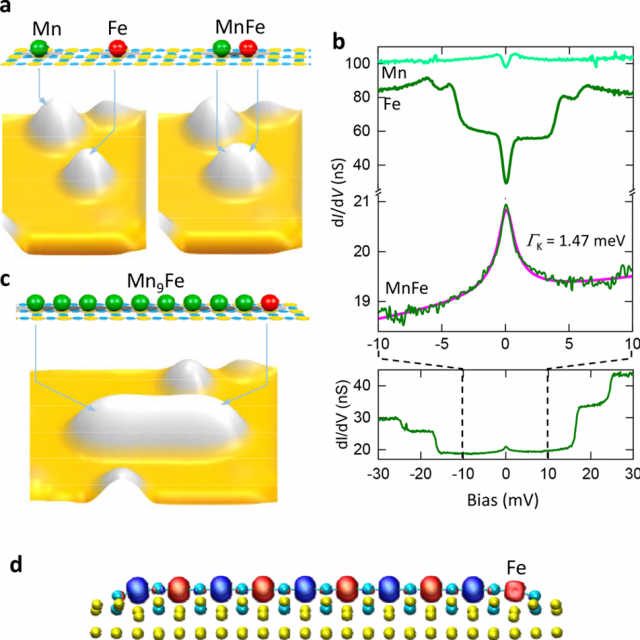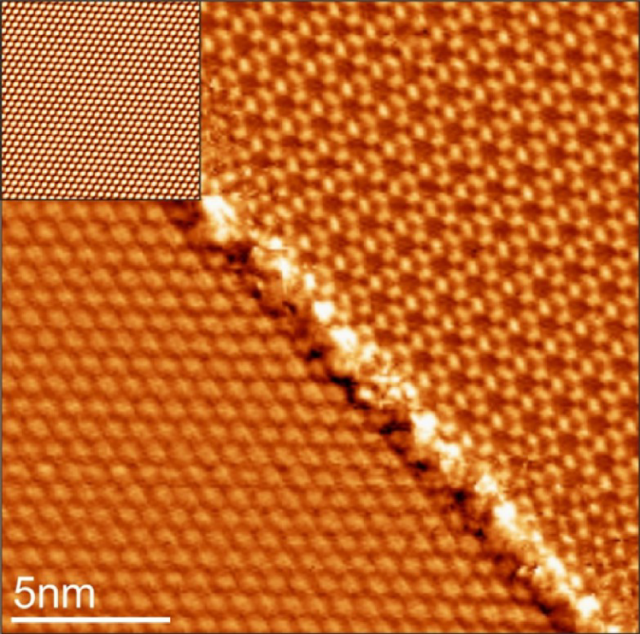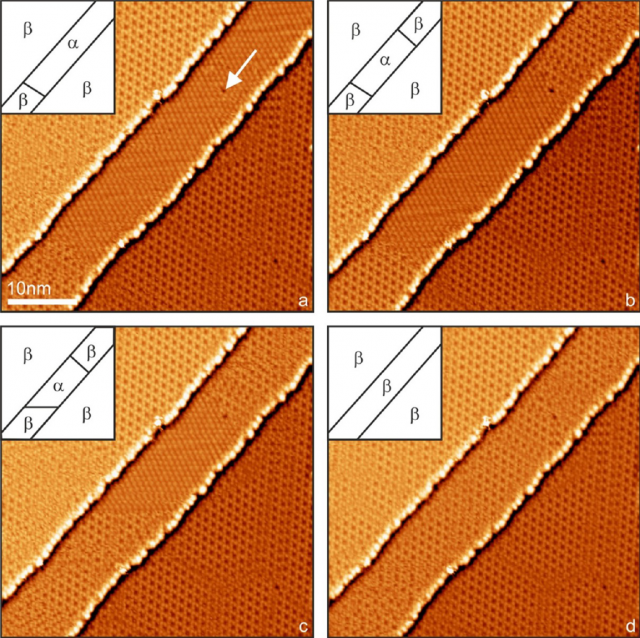The scattering of conduction electrons in metals owing to impurities with magnetic moments is known as the Kondo effect, after Jun Kondo, who analyzed the phenomenon in 1964. This scattering increases the electrical resistance and has the consequence that, in contrast to ordinary metals, the resistance reaches a minimum as the temperature is lowered and then increases as the temperature is lowered further.
The Kondo effect is a collective one involving an indirect exchange interaction of the conduction electrons with a paramagnetic impurity. In paramagnetism, atoms or molecules have net orbital or spin magnetic moments. Actually, conduction electrons scattering off a magnetic impurity can screen the localized magnetic moment by forming a nonmagnetic many-particle singlet state, the Kondo many-body state (KS). In this way, the KS can be understood as the coupling of the quantum numbers of the conduction electrons and the localized moment to form a hybrid quasiparticle.

A Kondo lattice is a set of localized magnetic impurities arranged in a regular pattern, which interacts with a bath of delocalized conduction electrons. When the two subsystems are weakly coupled, the Kondo lattice falls in the paramagnetic or antiferromagnetic (AFM) regimes. In the limit of a large coupling strength between localized moments and extended states of the conduction electrons, the two subsystems cannot be treated separately. Thus, the Kondo lattice introduces a new energy scale, related to a temperature T*, which plays the role of Kondo temperature – the one limiting the validity of the Kondo results – in the sense that below T* the magnetic susceptibility starts being anomalously reduced due to partial screening. In an extended Kondo lattice, for temperatures well below T*, the system falls in the heavy Fermi liquid phase.
This term, heavy Fermi liquid (HFL), merits some clarification. Landau–Fermi liquid theory is a theoretical model of interacting fermions that describes the normal state of most metals at sufficiently low temperatures. The theory explains why some of the properties of an interacting fermion system are very similar to those of the ideal Fermi gas (i.e. non-interacting fermions), and why other properties differ. Elements with 4f or 5f electrons in unfilled electron bands and their compounds , which have ions carrying magnetic moments but do not magnetically order, or only do so at very low temperatures, are generally known as heavy fermion or heavy electron systems because the scattering of the conduction electrons with the magnetic ions results in a strongly enhanced (renormalized) effective mass, as in the Kondo systems. The effective mass can be of the order 1000 times that of the real mass of the electrons. The low temperature behavior of many of these compounds can be understood in terms of a Fermi liquid of heavy quasiparticles, with induced narrow band-like states (renormalized bands) in the region of the Fermi level.
The HFL state is non-magnetic, because the conduction electrons fully screen the lattice spins. As in the case of the single-ion KS, the localized magnetic states contribute to the quasiparticle band developed by the coupled Kondo states. For this reason, this process is often called spin de-confinement.
Now, a team of researchers, including Roberto Robles (CFM), Nicolás Lorente (CFM & DIPC) and Ikerbasque Research Professor José Ignacio Pascual (CIC nanoGUNE), has fabricated 1 chains of coupled single-ion Kondo resonances by atomic manipulation in order to characterize in real space the crossover between the KS and the finite size analogue to a HFL.

The researchers selected a sample with a strong coupling, so that Kondo screening overcomes any intersite interaction. The 3d orbitals of individual Co atoms adsorbed on a clean Ag(111) surface played the role of localized spins and metal host, respectively.
The onset of the surface conduction band of Ag(111) is right below the Fermi level, which gives rise to strong fluctuations of the density of screening electrons and an anomalously large Fermi wavelength. By means of an analysis of the multiimpurity Anderson model, the researchers linked the Ag(111) surface electronic structure to the experimental fingerprints of coherent and collective screening of the artificial Kondo lattice. They probed experimentally the de-confinement of Co magnetic moments upon formation of a collective KS by imaging the amplitude of the Kondo resonance in tunneling conductance spectra, which delocalizes away from the position of the impurity centres.
They were able to visualize in real space the onset of HFL behaviour as the redistribution of the Kondo amplitude (and consequently spin de-confinement). In dimers, it appeared as a delocalization of the Kondo amplitude towards its center. In chains, it manifested as patterns. The possibility of observing the real space structures in the adatom Kondo lattice is intimately linked to the fact that the chains are finite.
Apart from the Kondo temperature, the theoretical model developed reproduces the essential experimental observations without adjustable parameters: some are fixed by the experimental conditions, and the leading dimension of the electron gas is two. Therefore, this microscopic description should apply for different material parameters, and for arbitrary lattice site and dimensions, laying foundations to further investigations of correlated nanostructures engineered with atomic precision.
References
- María Moro-Lagares, Richard Korytár, Marten Piantek, Roberto Robles, Nicolás Lorente, Jose I. Pascual, M. Ricardo Ibarra & David Serrate (2019) Real space manifestations of coherent screening in atomic scale Kondo lattices Nature Communications doi: 10.1038/s41467-019-10103-5 ↩



